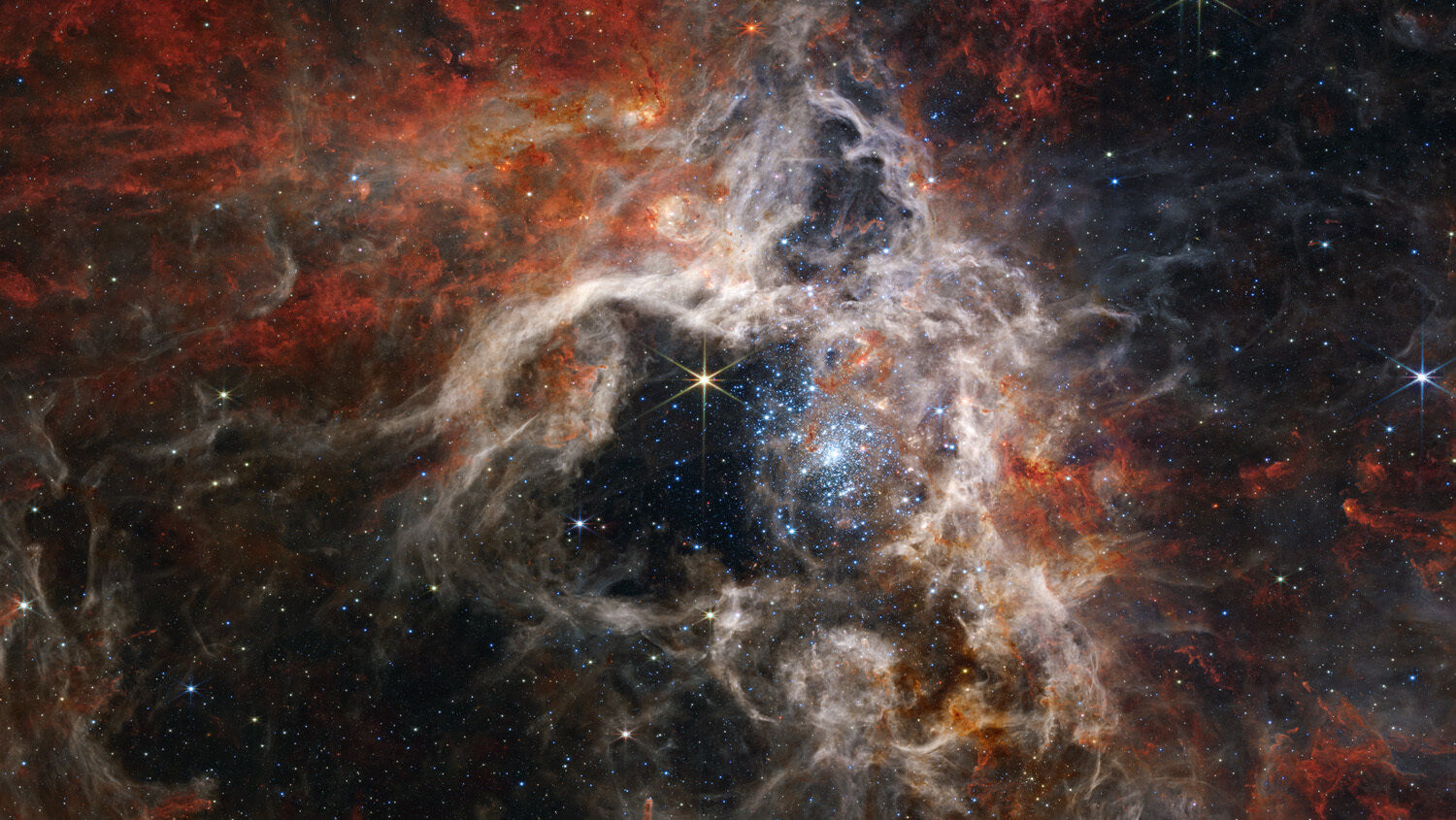
Early Universe Too Tidy for a Big Bang
The James Webb Space Telescope has caused problems for the big-bang theory. The idea that stars and galaxies gradually coalesced after a big explosion is facing serious problems. There’s no evidence that small, simple galaxies gradually grew into large, complex ones. Instead, early galaxies are as big and complex as today’s.
After parking itself 1 million miles from Earth in early 2022, Webb almost immediately began sending back photos of massive, ancient galaxies. Scientists thought there must be some mistake. Prof. Joel Leja of Penn State University said, “We’ve been informally calling these objects ‘universe breakers.’”
“We expected only to find tiny, young, baby galaxies at this point in time, but we’ve discovered galaxies as mature as our own in what was previously understood to be the dawn of the universe,” he said.
A paper published by Nature in February took a deep dive into 13 massive galaxies. The six biggest are 50 times bigger than expected. Space.com wrote: “Nobody expected them. They were not supposed to be there. And now, nobody can explain how they had formed.”
Now a new paper analyzing Webb data presents an additional problem. The big-bang theory points to a chaotic early universe: galaxies forming out of swirling clouds of particles that came from a dramatic explosion. Initially, galaxies should have been packed closely together in a small but expanding universe. Collisions should have been common.
The big-bang theory predicts that ancient galaxies should be a mess. Webb’s images are too neat and tidy.
One of the biggest ways this shows up is in galaxy shape. Scientists believe most ancient galaxies should be deformed—twisted or warped by collisions or close encounters with other galaxies. Disk galaxies, which are common today, should not have evolved until about 6 billion years ago.
The paper, published in the Astrophysical Journal on September 22, found this to be false.
“Based on our results, astronomers must rethink our understanding of the formation of the first galaxies and how galaxy evolution occurred over the past 10 billion years,” said coauthor Christopher Conselice, professor of extragalactic astronomy at the University of Manchester.
The study looked at nearly 4,000 galaxies, from 9 billion to 13 billion years old. Old theories suggest there should be zero disk galaxies; instead, they found nearly 1,700. They’re by far the most common galaxy type. Only 553 galaxies were spheroids, and 1,110 were “peculiars”—warped or merged galaxies.
The early universe was clearly a more harmonious and less chaotic place. Scientists did find evidence of galactic collisions and “peculiar” galaxies, but there is overwhelming evidence that there is much more than random chance behind the formation of these stars and galaxies.
Everything we know about science points to logic and order brought about by law. We can study the universe because the objects in it behave in logical, predictable ways. In Psalm 19, King David described the laws that govern the universe before transitioning to discuss God’s spiritual laws that govern human beings. It’s the same subject: Laws lead to harmony.
The presence of laws points to a Lawgiver, as Trumpet managing editor Joel Hilliker discussed in his article “Seeking the Message of the Universe.” But Webb’s photos go even further. The universe is not simply evolving in line with predefined laws. As Webb shows, this universe was created—it has purpose and meaning. Even in the makeup of its galaxies, there is more design and order than random chance would allow.
That means there is meaning and purpose for your life as well. The James Webb Space Telescope points to your potential.
Obeying God’s laws brings order into our own lives. We can bring our lives in harmony with the God of the universe. If we do, He will use us to fulfill His great purpose for the whole universe.
